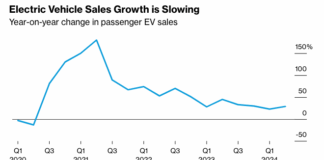- Militaries around the world routinely disperse tiny bits of aluminum-coated fiberglass and plastic — known as “chaff” — into the air column, to shield aircraft and ships from enemy radar
- Chaff has been used for decades, without clear evidence that it’s safe for humans and the environment
- In response to a United Nations Intergovernmental Panel on Climate Change (IPCC) report issued in August 2021, the U.N. announced it’s considering spraying sulfate aerosols into the Earth’s stratosphere to modify climate. The tiny reflective particles would act as reflectors, bouncing sunlight back into space instead of onto the Earth’s surface
- The U.N.’s Intergovernmental Panel on Climate Change (IPCC) is using “climate science” as a vehicle to promote socialist ideology
- According to Dane Wigington, founder of Geoengineeringwatch.org, the risks of geoengineering are so immense, it poses an extinction-level threat to humanity, and the window of opportunity to save ourselves is rapidly closing
In addition to the weather modification1 going on around the world, militaries around the world are also routinely dispersing tiny bits of aluminum-coated fiberglass and plastic — known as “chaff” — into the air column, to shield aircraft and ships from enemy radar.2 Not surprisingly, this has been done for decades, without clear evidence that it’s safe for humans and the environment.
According to a 1998 General Accounting Office report3 and a 1999 follow-up report4 by the Naval Research Laboratory, the environmental, human and agricultural impacts of chaff used in military training scenarios at the time were “negligible and far less than those from other man-made emissions,” but does that really mean it’s safe? As explained in a 2001 Navy Medicine paper:5
“Radiofrequency (RF) chaff is an electronic countermeasure designed to reflect radar waves and obscure planes, ships, and other assets from radar tracking sources.
Chaff consists of aluminum-coated glass fibers (also referred to as dipoles) ranging in lengths from 0.8 to 0.75 cm. Chaff is released or dispensed from military vehicles in cartridges or projectiles that contain millions of dipoles.
When deployed, a diffuse cloud of dipoles is formed that is undetectable to the human eye. Chaff is a very light material that can remain suspended in air anywhere from 10 minutes to 10 hours and can travel considerable distances from its release point, depending on prevailing atmospheric conditions.
Training for military personnel, particularly aircraft pilots, in the use of chaff is necessary to deploy this electronic countermeasure effectively. As with most acquired skills, the deployment of chaff must be maintained by practicing in-flight release during training.
It is estimated that the U.S. Armed Forces dispense about 500 tons of chaff per year, with most chaff being released during training exercises within the continental United States.”
Is Chaff Safe?
According to the Naval Medicine investigation, inhalation of whole, intact chaff fibers pose “no risk” to humans due to their larger size. “If inhaled, dipoles are predicted to deposit in the nose, mouth, or trachea and are either swallowed or expelled,” the paper states.6
Note the use of the word “predicted,” however. Predictions are not evidence. They’re basically guessing. Open questions also remain about what happens when the fibers degrade.
“Several investigations have demonstrated that Al-coated dipoles are resistant to weathering and breakdown under desert conditions,” the paper states.7
“A 1977 US Navy-sponsored a study found no evidence to indicate that chaff degrades significantly or quickly in water from the Chesapeake Bay nor did this material leach significant amounts of aluminum into the Bay.
A recent study by our group found no evidence that 25 years of chaff operations at the Naval Research Laboratory detachment at Chesapeake Beach, MD resulted in a significant increase in sediment or soil aluminum concentrations (Wilson et al 2000).
However, additional studies are needed to determine the half-life of chaff dipoles in various soils and environmental conditions and whether dipoles breakdown to respirable particles …
Although there is no definitive evidence from the epidemiological literature that chaff exposure is not harmful, there is epidemiological information available on workers involved in the glass fiber manufacturing industry. Data from these studies suggests that exposure to fibrous glass is not associated with increased risk of death from respiratory disease.”
The problem with that is that fiberglass workers are equipped with protective gear, including respirators, Tyvek suits and safety goggles8 — gear that normal people don’t wear when they’re out and about. All this tells us is that chaff is unlikely to cause harm to public health, provided people are wearing respirators, which they don’t.
Remarkably, not much beyond these three reports exist. While all admitted the need for continued research, none appears to have been published, so there’s really no telling what the real-world impact might be. That said, common sense tells us that air dispersed aluminum and fiberglass is highly likely to have some sort of impact on the environment and human health.
Geoengineering Has Been Going on for Decades
Aluminum and fiberglass are not the only toxins being sprayed across our skies. As detailed by Dane Wigington, founder of Geoengineeringwatch.org, weather modification, also known as geoengineering, in which various toxic metals and chemicals are dispersed at high altitude, has been going on for more than 70 years, and is increasing rather than declining.
In response to a United Nations Intergovernmental Panel on Climate Change (IPCC) report issued in August 2021,9,10 which called for radical measures to prevent further global warming, the Biden Administration launched a research effort in 2022 to determine the most effective way to dim the sun.11
One proposal involves injecting sulfur dioxide aerosols into the Earth’s stratosphere. The tiny reflective particles would bounce sunlight back into space instead of onto the Earth’s surface.12 According to Harvard researchers,13 this strategy is not only “technically possible” but also “remarkably inexpensive,” having a price tag that is “well within the reach of several nations.”
Earth’s climate is largely controlled by how much solar radiation reaches the Earth and how much is absorbed by its surface or reradiated to space. Cloud coverage and greenhouse gasses are examples of factors that influence the reflectance of solar radiation.14
“If geoengineering proposals are to influence global climate in any meaningful way, they must intentionally alter the relative influence of one of these controlling mechanisms,” Britannica explains.15
The U.N. report mentions solar radiation management and greenhouse gas removal as forms of geoengineering.16 Sulfate aerosols fall into the solar radiation management category. By reflecting more solar radiation back into space, the aerosols lower global temperatures but also have a serious “side effect” — they lower average precipitation.
As a result, additional geoengineering techniques — such as thinning out cirrus clouds in the upper atmosphere — would be necessary to counteract the decrease in precipitation. What could possibly go wrong?
Supercomputers have run models to predict how solar radiation management may affect different parts of the Earth, not only in terms of temperature but also rainfall and snowfall. Report author Govindasamy Bala, from the Indian Institute of Science, said “the science is there,”17 but it’s far from an exact one.
“I think the next big question,” Bala told Reuters, “is, do you want to do it? … That involves uncertainty, moral issues, ethical issues and governance.” As Reuters reported, “That’s because every region would be affected differently. While some regions could gain in an artificially cooler world, others could suffer by, for example, no longer having conditions to grow crops.”18
‘Catastrophic Risks’
Three months after the IPCC published its panic-inciting report, Australian and British researchers published an original research article warning that stratospheric aerosol injection carries “catastrophic risks” that may well lead us into “a fate worse than [global] warming”:19
“Injecting particles into atmosphere to reflect sunlight, stratospheric aerosol injection (SAI), represents a potential technological solution to the threat of climate change. But could the cure be worse than the disease? …
SAI plausibly interacts with other catastrophic calamities, most notably by potentially exacerbating the impacts of nuclear war or an extreme space weather event. SAI could contribute to systemic risk by introducing stressors into critical systems such as agriculture.
SAI’s systemic stressors, and risks of systemic cascades and synchronous failures, are highly understudied. SAI deployment more tightly couples different ecological, economic, and political systems. This creates a precarious condition of latent risk, the largest cause for concern …
A well-coordinated use of a small amount of SAI would incur negligible risks, but this is an optimistic scenario. Conversely, larger use of SAI used in an uncoordinated manner poses many potential dangers. We cannot equivocally determine whether SAI will be worse than warming. For now, a heavy reliance on SAI seems an imprudent policy response.”
In June 2023, the European Commission put out a call for “international talks on the dangers and governance of geoengineering,” warning that geoengineering schemes aimed at altering the global climate pose “unacceptable” risks. During a news conference, EU climate policy chief Frans Timmermans stated:
“Nobody should be conducting experiments alone with our shared planet. This should be discussed in the right forum, at the highest international level.”
Time will tell whether such talks ever take place. In September 2023, the Climate Overshoot Commission, chaired by Pascal Lamy, a former World Trade Organization chief, called for a worldwide moratorium on solar radiation modification experiments “that would carry risk of significant transboundary harm,” and to focus instead on strategies to reduce greenhouse gas emissions.20,21 But, as of yet, no such moratorium has been agreed upon.
Socialist Ideology, Not Climate Science
Zuzana Janosova Den Boer experienced Communist rule in Czechoslovakia before moving to Canada. In her article, “I Survived Communism — Are You Ready for Your Turn?” she detailed the “all-too familiar signs of the same propaganda” starting to permeate her adopted country.22
In relation to geoengineering, she points out that communism has been subverting the environmentalist movement since the 1970s, when then-chairman of the Communist Party USA, Gus Hall, published a book called “Ecology,” in which he stated:23
“Human society cannot basically stop the destruction of the environment under capitalism. Socialism is the only structure that makes it possible … We must be the organizers, the leaders of these movements.”
Den Boer writes:24
“This idea was incorporated into the U.S. Green Party program in 1989 … in which the fictitious threats of ‘global warming’ and ‘climate change’ are used to scare the public into believing humanity must ‘save the planet’:
‘This urgency, along with other Green issues and themes it interrelates, makes confronting the greenhouse [effect] a powerful organizing tool … Survival is highly motivating, and may help us to build a mass movement that will lead to large-scale political and societal change in a very short time …
First of all, we [must] inform the public that the crisis is more immediate and severe than [they] are being told, [that] its implications are too great to wait for the universal scientific confirmation that only eco-catastrophe would establish.’”
The U.N.’s Intergovernmental Panel on Climate Change (IPCC), Den Boer suggests, is promoting not climate science but socialist ideology, citing as evidence comments made by Ottmar Georg Edenhofer, former co-chair of the IPCC Working Group III, who in a 2010 interview stated that climate issues are about economics, and that:25
“We must free ourselves from the illusion that international climate policy is environmental policy … We must state clearly that we use climate policy de facto to redistribute the world’s wealth.”
Geoengineering Poses Extinction-Level Threat to Humanity
Even without factoring in social control, the practical risks of geoengineering are impossible to ignore. According to scientific studies, the particulates dispersed during these geoengineering events “shred” the ozone layer. They also disrupt the hydrological (rain) cycle, which leads to another host of downstream effects, and this is in addition to spreading toxins across the entire planet surface.
So, while some of the planet might benefit from these programs, other parts could be decimated by droughts, raging forest fires, flooding or storms. Moreover, while global cooling is the stated aim of most of these geoengineering programs, as the planet warms, the laws of physics state you need more precipitation to cool it, not less, because the atmosphere carries more moisture as the temperature rises.
To cool the planet, you need to create more rain, but these programs have resulted in less rain, and the reason for the reduction in rain fall is due to the particulates in the atmosphere. In addition to deflecting heat from the outside, these particles also trap heat down below, making the overall heating of the planet massively worse.
The risks are so immense, Wigington warns geoengineering already poses an extinction-level threat to humanity. The window of opportunity to save ourselves is rapidly closing.
Unfortunately, if people really understood the totality of the situation — not just that the climate is being manipulated, but that as a result, the global climate systems have deteriorated to the point that the entire Earth is in serious trouble; in short, that these programs may have created a runaway extinction event — the emotional impact might be too great to bear for many. Wigington addressed this in an interview I did with him back in 2016:
“Our situation is far more severe than most people have any understanding of,” he said. “Climate engineering is making the situation worse, not better.
So [they must] try to keep the population from panicking because of the severity and immediacy of the climate implosion, and keep the population in the dark because the climate intervention programs have helped to accelerate this process and toxified every single one of us in the process.
Every single human subject we test is packed full of aluminum, barium — all the heavy metals we know are associated with these programs. It doesn’t matter where they live.
And we know it’s coming down in the precipitation in unimaginable quantities — quantities enough to change soil pH values in the Pacific Northwest 10 to 12 times total alkaline — that’s an unimaginable amount of metal coming down in the rain.
If populations understood, truly, what’s been done to them, what’s been done to the planet … they’d be taking to the streets with pitchforks and torches all over the globe.”
California Aquatic and Terrestrial Insect Life Has Been Decimated
Geoengineeringwatch.org lists a number of lab tests that have been performed on rain water, air sample and more, and their results. You can find them under the Tests section.
“In regard to the effect in the environment, in Northern California alone … what we’ve seen in the last decade … is a 90% decline in aquatic and terrestrial insect life — a virtual crash,” Wigington told me in 2016.
“There’s so much aluminum coming down the precipitation, affecting the soil pH, and — this is very important — the UV radiation level is off the charts, and that we can link directly to climate engineering … We’re seeing UVB levels about 1,000% higher than we’re being told. It’s burning the bark off of trees. It’s killing plankton. It’s affecting insect life …
[It increases UVB radiation] because it shreds the natural protection for the planet. When you put a particle in the atmosphere, it doesn’t matter whether it’s from a back of a jet or a volcano; it causes a chemical reaction in the atmosphere that destroys ozone. Period. So the more of these particles you put in the atmosphere, the more rapid the ozone destruction is.”
With all of that in mind, it’s highly unlikely that military chaff dispersements have no negative impact. An argument could be made that chaff is too important of a defense system to get rid of, and that may be true. But the climate-specific engineering is another matter altogether.
In years past, it was kept hush-hush, and dismissed as a conspiracy theory. Since then, however, governments around the world, and international bodies like the U.N. have become quite open about the use of geoengineering for climate control, and if the global public does not push back against these efforts, we might not survive to regret it.
Geoengineeringwatch.org has a list of action items you can review if you want to get involved and get the word out. I also recommend watching Wigington’s documentary “The Dimming,” below, to learn more.
Disclaimer: We at Prepare for Change (PFC) bring you information that is not offered by the mainstream news, and therefore may seem controversial. The opinions, views, statements, and/or information we present are not necessarily promoted, endorsed, espoused, or agreed to by Prepare for Change, its leadership Council, members, those who work with PFC, or those who read its content. However, they are hopefully provocative. Please use discernment! Use logical thinking, your own intuition and your own connection with Source, Spirit and Natural Laws to help you determine what is true and what is not. By sharing information and seeding dialogue, it is our goal to raise consciousness and awareness of higher truths to free us from enslavement of the matrix in this material realm.
 EN
EN FR
FR


























